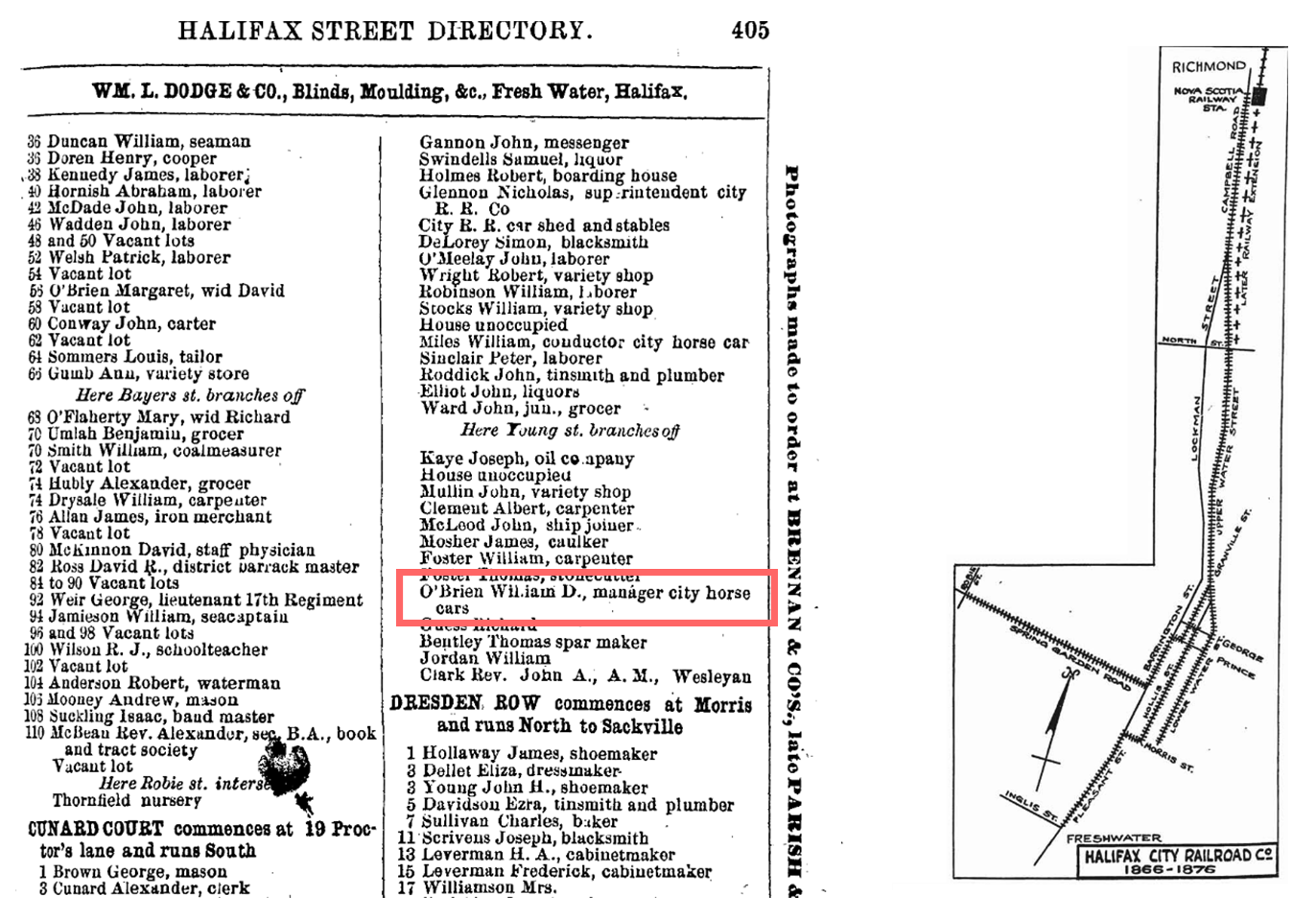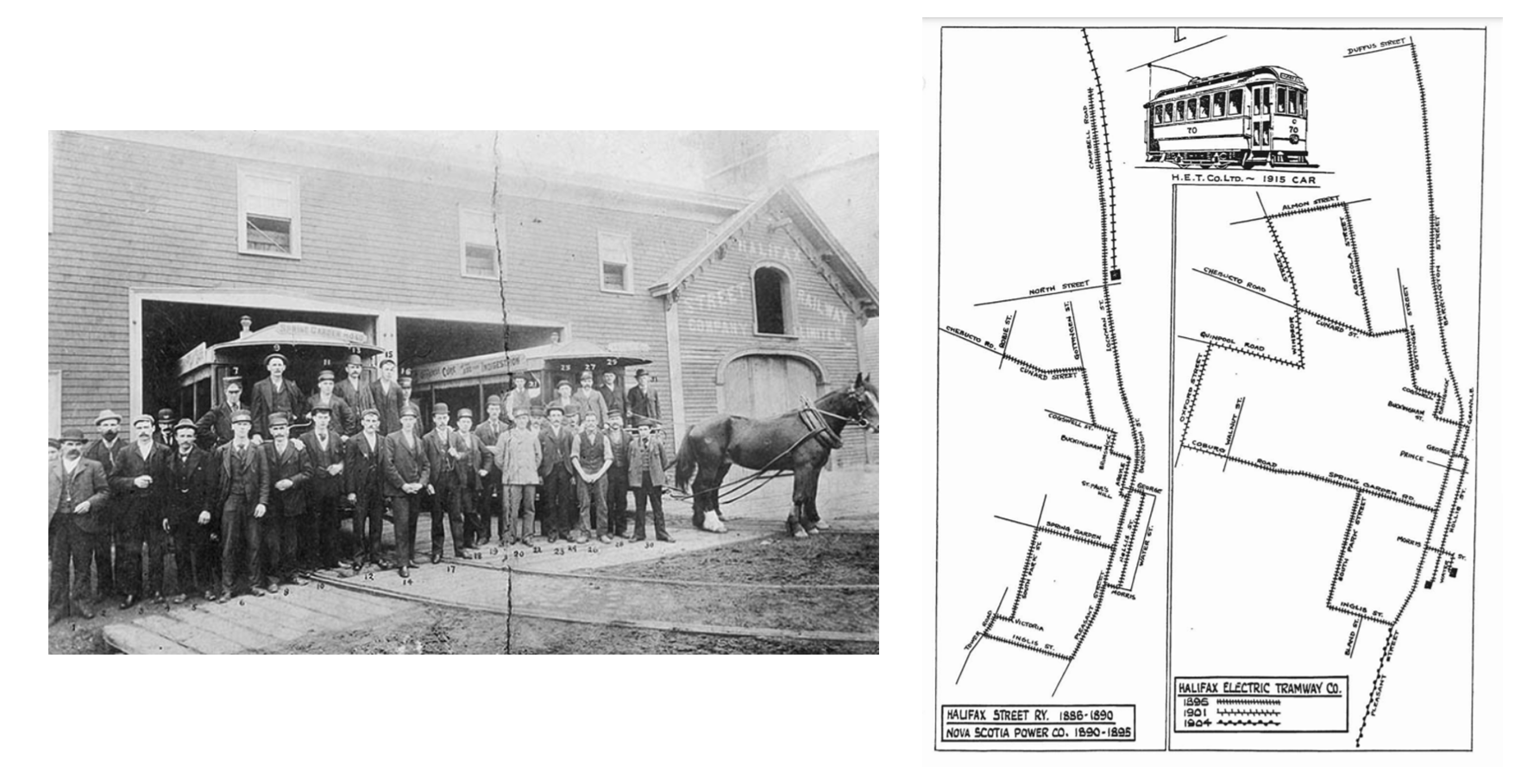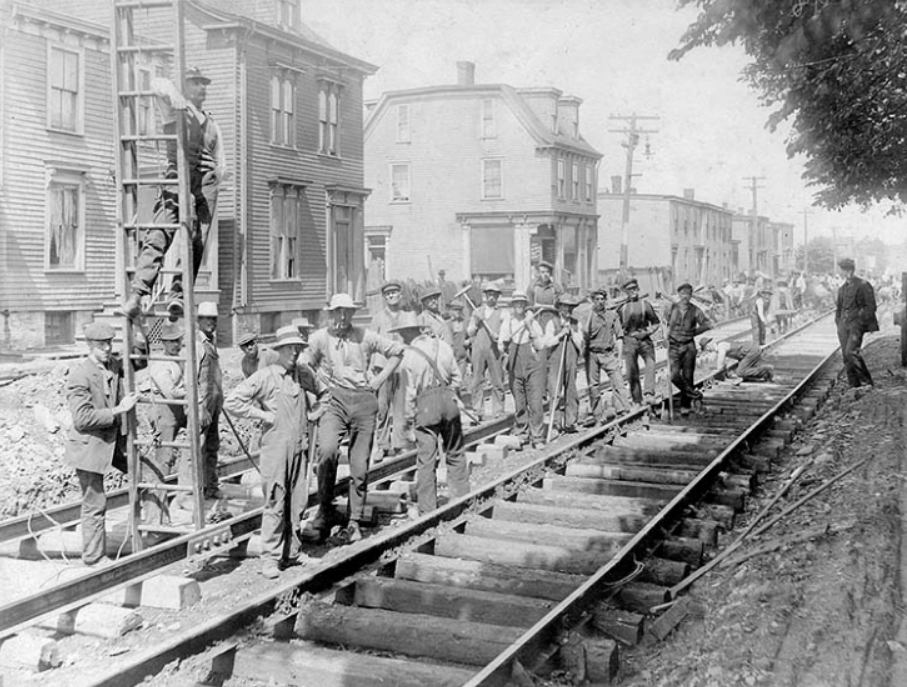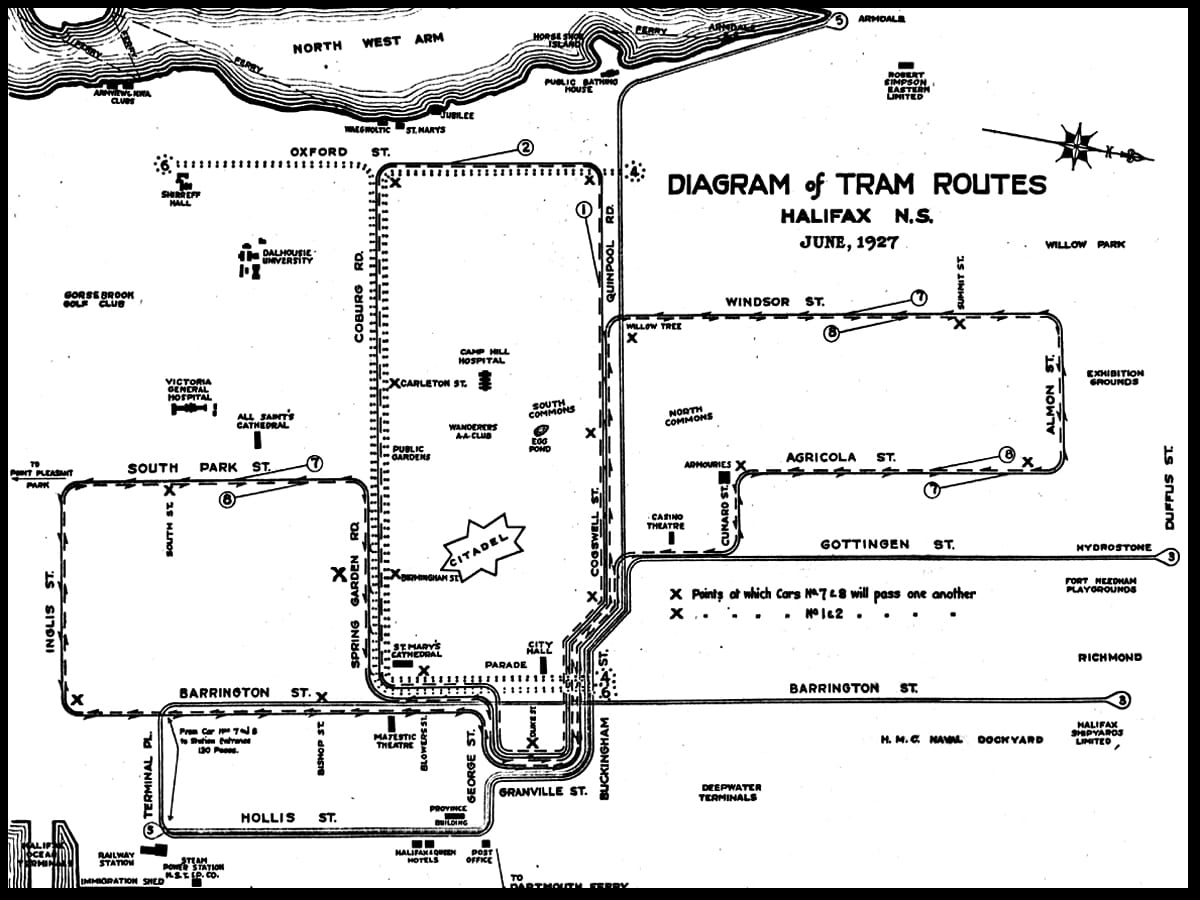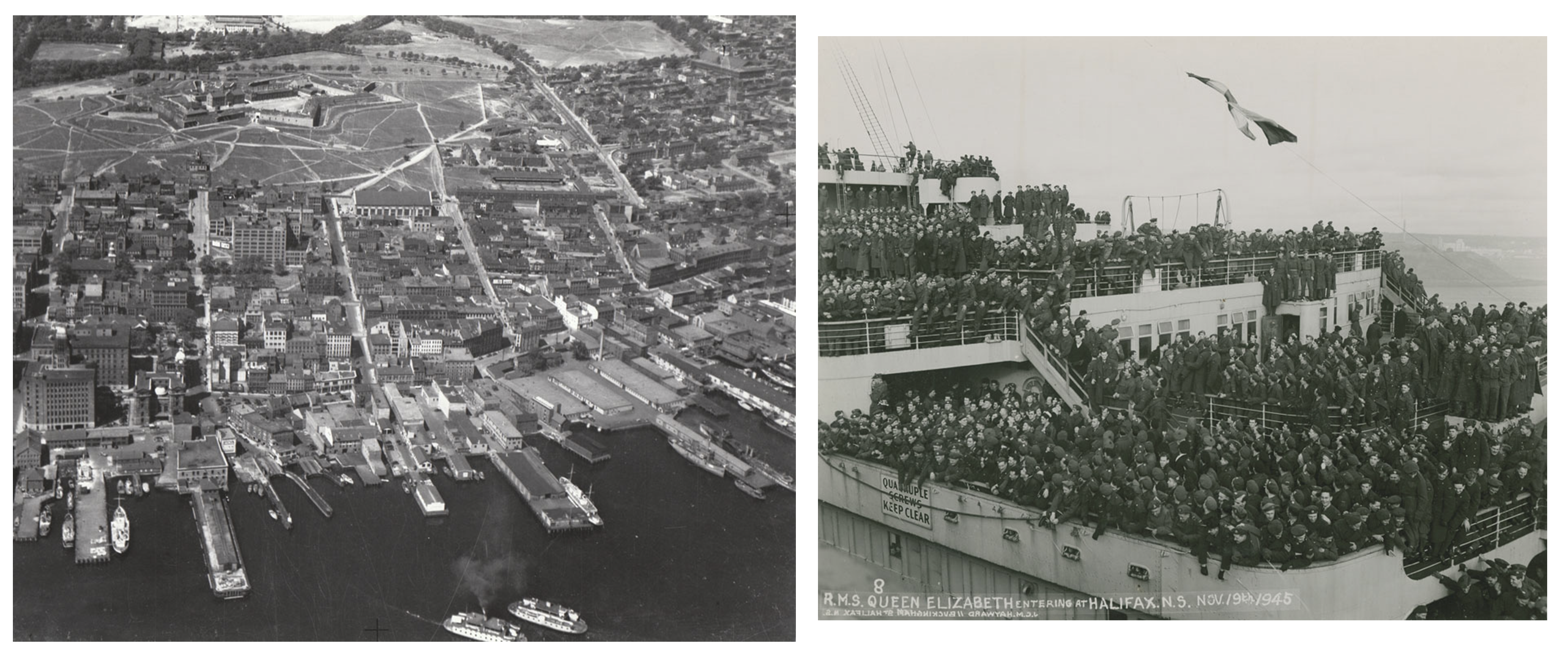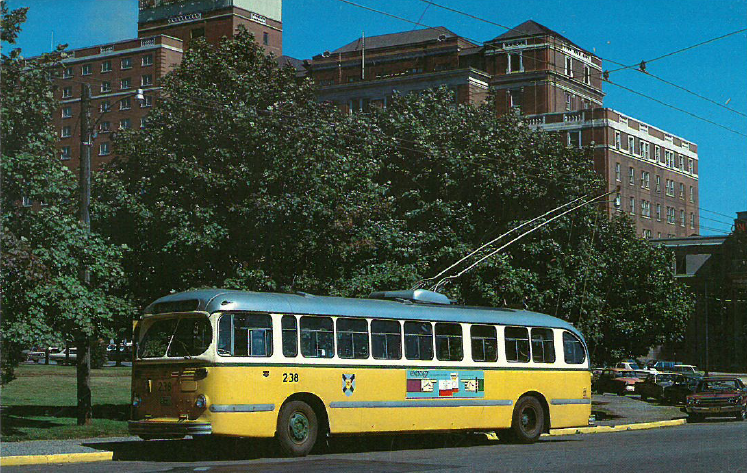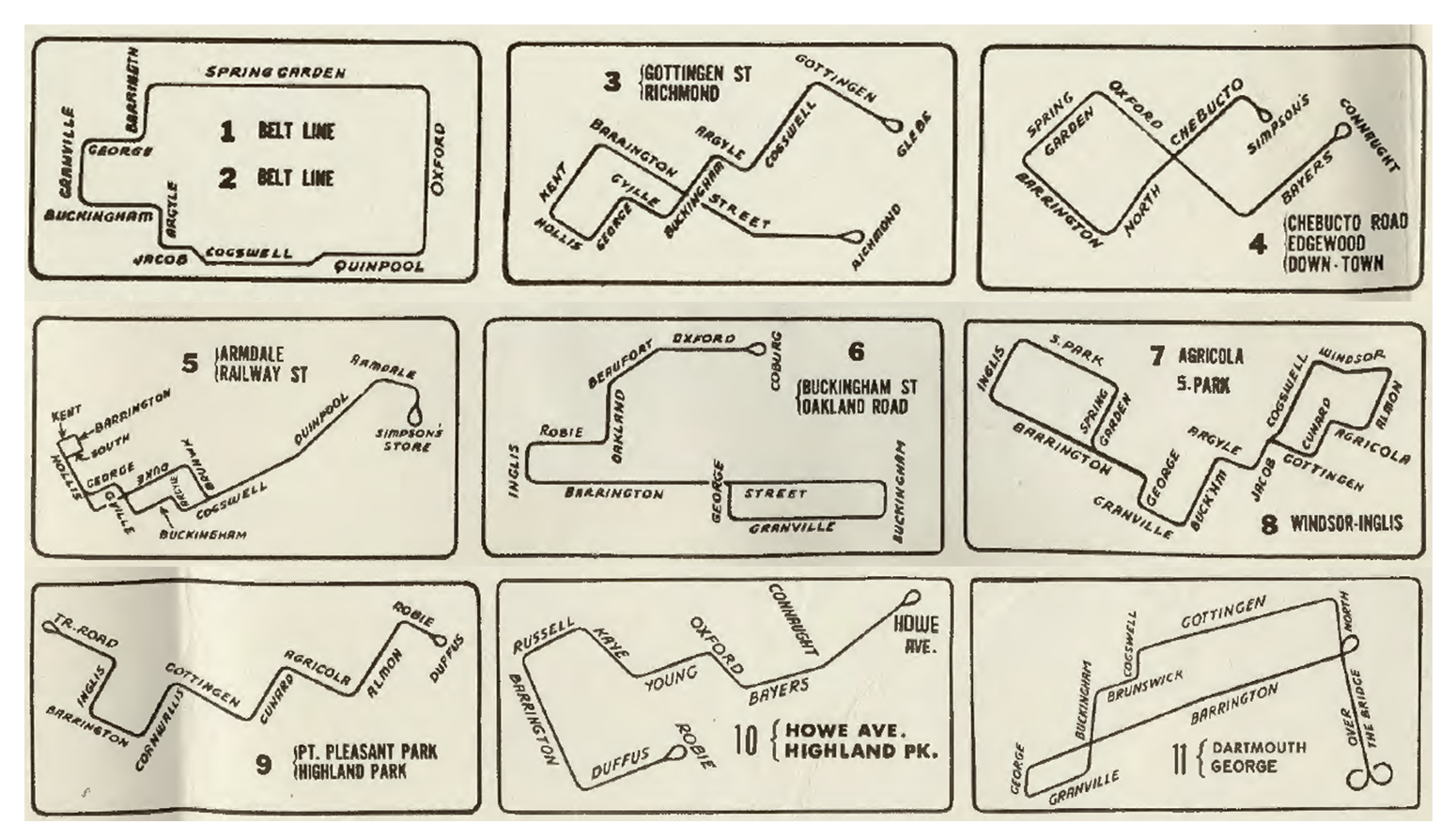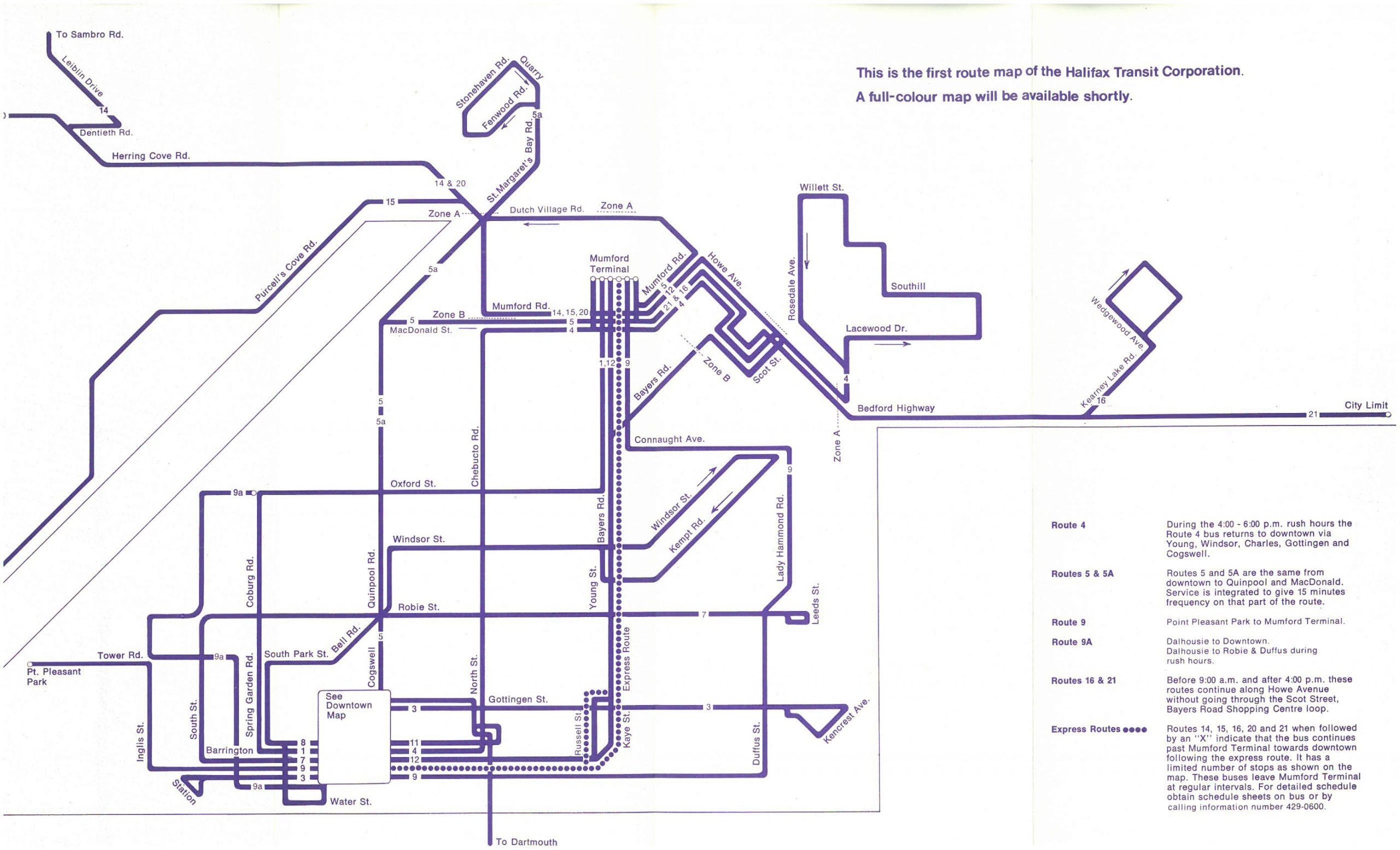A Historical Review of Public Transit in Halifax
Public transit in Halifax has a long a tumultuous history. The operation of the service passing ownership between around a half dozen different companies. Seeing different modes of transport such as horse drawn carriages, electric tram trolleys, electric stagecoach buses, and eventually to the diesel buses we see on the streets today.
1866-1876: The Beginning
William D. O’Brien owned and operated the Halifax City Railroad Company. As the first large scale public transportation project in the city, people flocked to the impressive horse drawn carriages. Featuring a 6am-10pm operating schedule, and tickets costing about 5¢, the service very quickly looked to expand, with additional track laid to accommodate the demand.
After a decade of bustling service, the much larger crown-backed Intercolonial Railway was looking to expand and lay additional track further into the city. Their plans encroaching and overlapping with the track of the Halifax City Railroad Company. With little success in negotiating with the railroad giant, O'Brien eventually sold off his carriages and horses and closed the business.
1886-1895: The Revival
After nearly a decade without any public transit, three American (E.F. Camp, John F. Zebley, and John R. Bothwell) recognize the unfulfilled need and found the Halifax Street Railway Company. Following in the shoes of O'Brien, their horse drawn carriages were a huge success. Running every 15 minutes and costing about 5¢ per person.
Though it didn't take long for the budding new electric trams found in increasingly more and more North American cities to break ground in Halifax as well.
1895-1925: Rapid Expansion & The Great War
In 1895, the Halifax Electric Tramway Company was founded. They purchased the Halifax Street Railway Company, the Nova Scotia Power Company, and the Halifax Illuminating & Motor Company. Using their newfound assets, they were able to begin installing the necessary infrastructure required for operating the electric trams within the city. After installing the power poles and electric cables, upgrading the tracks, and building a depot capable of storing 30 cars; in 1896 the final horse drawn carriages had made their last runs.
Throughout the years leading up to World War I, there was a flurry of additional track laid throughout the city. However with the needs of the military; expansion was halted in favor of military manufacturing and transportation. As a strategically valuable deep water port, with protection from the Citadel and George's Island, Halifax served as a key military asset during the war.
With the needs of the war requiring men of all ages to deploy across the Atlantic, the newly renamed Nova Scotia Tramway and Power Company employed some women as conductors. And of course, the tragic events of the Halifax Explosion which decimated the Halifax and Dartmouth waterfronts, significantly impacted the operation of the tramway. However by the end of the 20's, things were mostly back to full operation.
1925-1949: The Birneys & World War II
After the needs of the war had subsided, the Nova Scotia Tramway and Power Company decided it was time to replace some of the old carriages. 24 small but lightweight and affordable trolley trams called 'Birneys' were purchased to modernize the fleet.
The new cars were extremely popular, painted a bright canary yellow they were east to recognize rolling through the streets. When other cities began selling off their own Birneys, the city quickly swooped in a purchased them to augment and expand the ever growing network. Costing about 10¢ per person, and 5¢ for a child, they were a fairly affordable option for the average working class citizen to navigate the dense, sloped hills of the Halifax peninsula.
However the end of the 30's ushered in start of World War II. Similarly to the past, Halifax was a key military asset in the transportation of manpower and armaments across the Atlantic. With the population doubling during this time from ~60,000 to ~120,000, the lightweight and inexpensive Birneys struggled to handle the increased demand. Going from serving ~9 million passengers a year to ~30 million passengers with the extra burden of the war effort.
After the war, the decision was made to scrap the fleet. Maintenance costs going through the roof, it was deemed too expensive to continue with the Birneys. In the end, the fleet had grown to 86 cars, up from the initial 24 purchased almost three decade earlier.
On March 26th, 1949, the final Birney took it's final farewell tour through the city. Amassing crowds and photographers, the people of Halifax were sad to see the cars go. Two poems were added to the side of the Birney reading:
“Good-bye my friends, good-bye! Good-bye, my friends, this is the end; I’ve travelled miles and miles And watched your faces through the years, show anger, tears and smiles; Although you’ve criticized my looks And said I was too slow, I got you there and brought you back, Through rain and sleet and snow.”
“Farewell to all you motorists, To-day my journey ends! So let’s forget past arguments, Shake hands and part as friends. You’ve followed me around the streets And many times you swore Because I beat you to the stop And dared you to pass my door!”
1959-1970: The Rise of the Automobile
In an effort to fill the void left by the Birneys, electric trolleybuses were purchased. Costing nearly $2 million, the trolleybuses were much larger than the small Birneys, and since they were no longer restricted to only the rails, they were more flexible, and were better at climbing the steep hills of downtown Halifax.
With the rise of the personal automobile, the electric trolleybuses fit in naturally along side the other new and 'innovative' gasoline vehicles that begin to occupy the streets. The buses were extremely popular and served ~27 million passengers per year.
As the 60's began to wane, the Nova Scotia Tramway and Power Company began to experience financial hardship. With the continued rise of the personal automobile, less and less people were taking public transit. With Halifax and the outer communities such as Dartmouth, Bedford, and Sackville seeing significant growth; it became harder for the buses to maintain their existing service while still bringing in a profit.
Looking to the city for financial assistance in the way of a subsidy or a buyout, an official review of the public transit service and it's finances was commissioned. In the end, the report concluded that the city purchase the company for a total of $500,000, as well as transition to diesel operated busses within the next 5-10 years.
On December 31st, 1969, the final electric trolleybus made it's farewell tour, pulling into the Young St. station at 12:45am on New Year's day. An emotional event, similar to when the Birneys were retired, many of the citizens of Halifax were sad to see the trolleybuses go.
1970-2023: The Domination of the Combustion Engine
74 diesel operated busses were purchased by the newly formed Halifax Transit Corporation to replace the trolleybuses, and an entirely new route system introduced in an attempt to service more of the surrounding communities. Tickets cost 25¢ for adult and 10¢ for children, with additional costs added to cross the bridge to Dartmouth.
Many of the people of Halifax were worried about the environmental impact of theses new combustion engine buses, as well as the noise pollution they would incur. The previously Birneys and trolleybuses operated completely silently using the electric power they received from the overhead power lines. However the transition went full steam ahead and new buses hit the streets on January 1st, 1970.
Since the initial launch of the diesel buses in 1970, not much has changed in any significant way. New buses have been purchased, old buses replaced, some new lines here and there, a handful of new terminals; but fundamentally, things are mostly the same as they were in 1970.
2023-??: Renaissance or Stagnation
In 2015 a feasibility study was done in hopes to partnership with Via Rail to create a commuter rail service between Windsor Junction and downtown Halifax aiming to serve the Bedford Highway corridor along the existing track owned by Canadian National Railway (CN).
After discussion in 2016, the Halifax regional council unanimously voted against such proposal, citing infrastructure costs and operational constraints. With initial costs of $36-72 million, and annual operating costs of ~$8 million. The Highway 107 Extension expected to complete in Fall 2023, is estimated to cost ~$210 million, and according to a report released on January 6th, 2023, the province has committed $1 billion towards roadway infrastructure improvements in the coming years.
In May 2020, the regional government released a report called the Rapid Transit Strategy in an attempt to modernize and revitalize the existing bus transit system. However since it's announcement in 2020, no money has been allocated towards this project and the government has not provided any comments on the current state of the project.
With a population growth rate of 9.1% from 2016-2021 (one of the highest in all of Canada), and no signs of slowing down; Halifax is primed to see a significant increase in traffic and congestion if the current rate of car dependency continues. Increased spending needs to be allocated towards convenient and more sustainable transit solutions; such as improved walking and biking infrastructure, reliable and frequent bus service with priority signaling and dedicated lanes, as well as investment in light and medium/heavy passenger rail services.
Recent Developments
In an article released by Global News on June 6th, 2023. Counsellor Waye Mason had this to say:
Hopefully at the end of the summer, you’ll be able to show that you paid for a ticket on your phone.
About half of the big cities in Canada, a little less than half, have pay-by-tap. The other half are all getting it in the next year-and-a-half. So we’re kind of in that second wave of late adopters.
While a this is a reasonable step forward to improve the lackluster bus service that is currently available; it is really just a bandaid for a compound fracture. Without serious reinvestment into additional public transit service (such as buses every 5-10 minutes, a transfer-based system, and some form of light rail service between Downtown and Sackville along the Bedford Highway using the existing right of way there), the vast majority of people will continue to use their personal automobiles to travel to every single destination they visit in a day.
Update Fall 2023
After many delays, the mobile ticket app is now available to use for the average Haligonian. A necessary step forward, and a major hurdle removed for many people to get on the bus in the first place. Instead of having to have exact change or stumble across one of like 5 ticket kiosks, your phone can now be your bus ticket.
Download the HFXGO app from either the Apple App Store or the Google Play Store and you can buy single tickets, bulk tickets, days passes, and monthly passes. Just activate your ticket right before getting on the bus and you've got a valid ticket for the next 2.5 hours. You are free to take as many bus a ferry trips within that time period for just $2.75.
Now that one of the major barriers to entry ridership has been addressed, service and frequency needs a major improvement to handle all the new ridership.
References
Once Upon a Tram: The Halifax Street Railway
All-Time List of Canadian Transit Systems: Halifax, Nova Scotia
From the Birney to the Bus: A Brief and Not at All Definitive History of Halifax Public Transit
Digging up the past: Halifax’s buried rail tracks make way for progress
Aspects of a complete design programme for Halifax Transit
Halifax Street Railway 1866-1949
Halifax Rapid Transit Strategy
Commuter Rail Feasibility Study
Province Invests in Highway, Bridge, Ferry Infrastructure
Highway 107 Sackville-Bedford-Burnside Connector
Halifax among fastest growing cities in Canada
More cities are adopting electronic payment for transit. Why is Halifax running behind?
